Commercial safes are nothing new to the loss prevention world, since being patented in 1835 safes have done nothing but increase in security and presence. Which means it’s probably not necessary to spell out the benefits of installing a safe and protecting the valuables of your facility, business or home. Widely considered non-negotiable, commercial safes provide an integral piece of the security your business needs to thrive. With the number of types of safes available it’s best to have a clear plan before you start your search for the perfect one.
The easiest place to start your selection process, whether you’re evaluating a current safe or in the market for a new one, is to determine the average dollar value of its contents. Typically, one doesn’t take the same precautions to secure $5,000 as they do to secure $5,000,000 – the level of security you desire and size of your budget will be greatly influenced by this value and narrow down the types of safe that fit these requirements.
Underwriter Laboratories (UL) conducts a series of extensive testing to categorize the different types of safes into one of the following classes:
 But why is it important to know the class of the safe you’re purchasing? As a leg up on possible criminals, you know your safe will withstand force for 60 minutes; your alarm will sound immediately upon entry. Given that the average police response time in your area is 7 minutes, chances are your goods are safe. But, what if your safe IS compromised? How does insurance cover contents of the safe? There is a limit on the coverage amount offered dependent upon the safe type and class.
But why is it important to know the class of the safe you’re purchasing? As a leg up on possible criminals, you know your safe will withstand force for 60 minutes; your alarm will sound immediately upon entry. Given that the average police response time in your area is 7 minutes, chances are your goods are safe. But, what if your safe IS compromised? How does insurance cover contents of the safe? There is a limit on the coverage amount offered dependent upon the safe type and class.
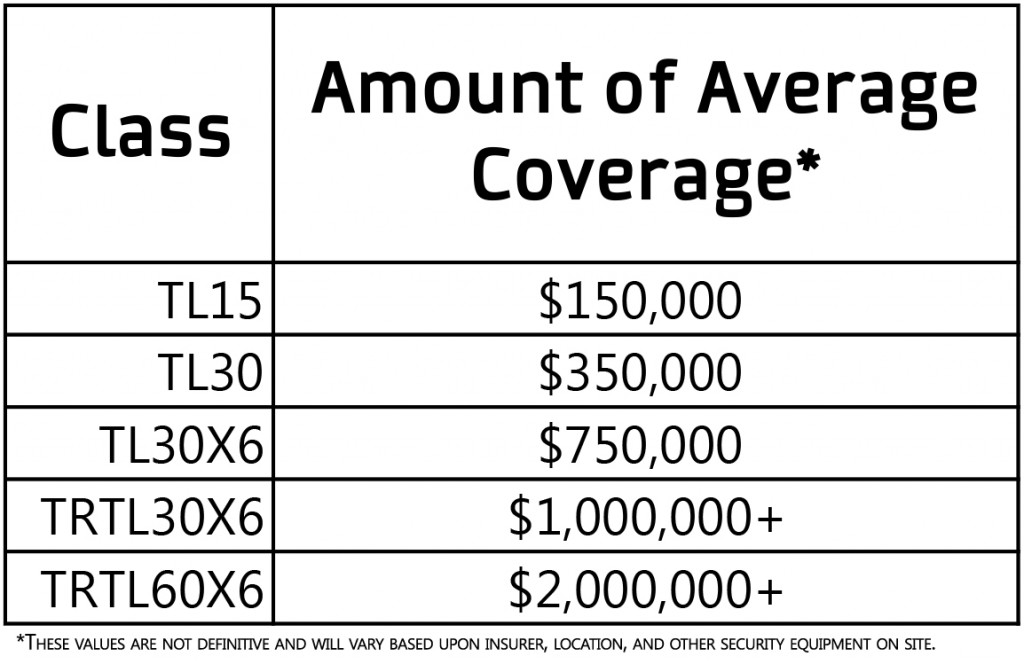 Whether you’re a small business or multi-million dollar chain, the options available are the same. The question is what those options are?
Whether you’re a small business or multi-million dollar chain, the options available are the same. The question is what those options are?
Types of Safes – Deposit or Drop Safes
Depository safes are a popular choice among the retail and restaurant worlds. I manned the register at a busy gas station during a semester of college; policies were in place to clarify the dollar amount which constituted a ‘safe drop’ and specific procedures were in place in order to guarantee the cash was there the next morning for the manager.
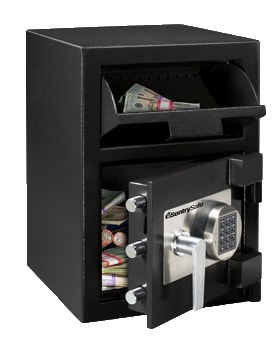 Gas stations are far from the only establishments that use drop safes; as they provide the ability for any and all employees to deposit cash or documents without allowing access to the main safe compartment. In most drop safes there is a hopper-like door located at the top of the safe; this door is opened and cash is dropped inside to the body of the safe. There is a standard door on the front of the safe with a lock to ensure only authorized individuals can access items after dropping.
Gas stations are far from the only establishments that use drop safes; as they provide the ability for any and all employees to deposit cash or documents without allowing access to the main safe compartment. In most drop safes there is a hopper-like door located at the top of the safe; this door is opened and cash is dropped inside to the body of the safe. There is a standard door on the front of the safe with a lock to ensure only authorized individuals can access items after dropping.
Types of Safes – Fire-Rated Safes
Fire-rated safes are freestanding and designed to protect contents in the event of a fire. These disasters are traumatic and frantic; fire-rated safes provide the security knowing the overall health of your business is safely tucked away while you focus on the physical health and safety of your employees and patrons. They are rated for a specific period of time which is tested and determined by UL. Currently, no safe can claim to be fire ‘proof’ but there are options that provide substantial resistance to fire.

While both of these manufacturing methods result in a fire-rated safe, the composite clad safe provides a much higher fire rating as well as true burglar protection. The second does provide moderate fire protection but will do little to thwart an attempted robbery. If you choose your safe based on its fire rating, it’s vital to also verify it’s capability of burglar protection for maximum security.
Types of Safes – Office Safes
Office safes are also common in retail and restaurant sectors; they can be bolted to the floor or freestanding and are usually fire resistant with very high fire ratings. In addition, they are drop tested to ensure the burglar will not gain access to its contents by repeated dropping of the safe – that’s if they can manage the repeated dropping, considering they are constructed of steel and very heavy.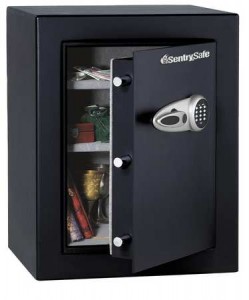 While these safes are similar in construction and design to home safes, office safes now commonly use an electronic lock with higher security than your ordinary home safe.
While these safes are similar in construction and design to home safes, office safes now commonly use an electronic lock with higher security than your ordinary home safe.
Types of Safes – Data or Media Safes
Information stored on any kind of electronic device can be deleted at relatively low temperatures. Paper that is tucked away in the safe when there is a fire can withstand temperatures of up to 350° Fahrenheit while digital media can only withstand temperatures of less than 125° Fahrenheit. Data safes are manufactured to protect the priceless and essential information from high temperatures and smoke damage.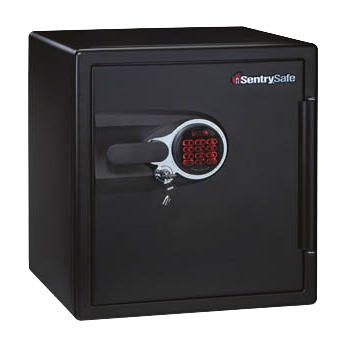 These safes were designed to protect items similar to the following:
These safes were designed to protect items similar to the following:
- USB/Flash drives
- Hard drives
- DVDs
- CDs
- Cassette tapes (Does anyone even use these things anymore?)
- Tape backups
- Microfiche
- Zip disks
- Jazz disks
Types of Safes – In Floor Safes
These inconspicuous safes are designed to be concealed in concrete on the ground. It’s hard to rob the safe when you can’t even find it! These are a popular choice within numerous commercial fields due to the added security features.
Types of Safes – High Security
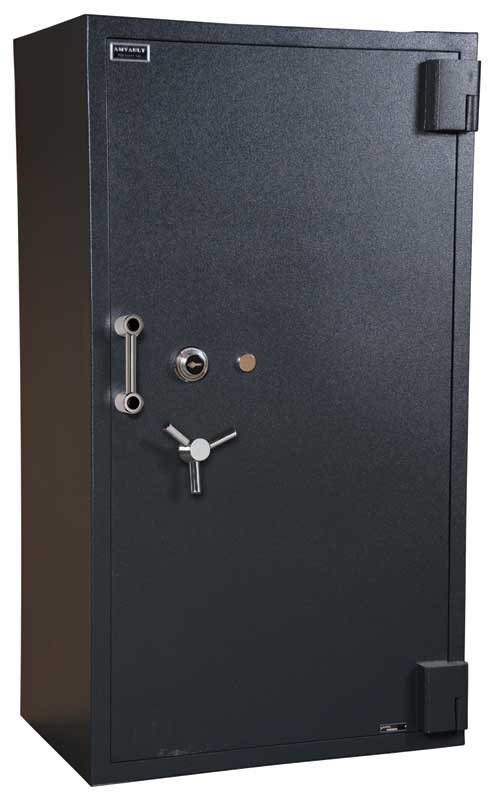
Behold the mack-daddy of all commercial safes. These are the most robust and secure safes you can find. High Security safes include the TL and TR categories of safes. Typically these safes will include multiple types of barriers to prevent drilling and will also have additional locking mechanisms that deploy when someone is trying to force their way in.
Saying the price is steep would be an understatement, but for the information or valuables that are of the utmost importance, the investment could be worth the peace-of-mind alone.
Electronic locks are replacing a minimum of 50% of the traditional combination locks in commercial businesses – check out this post post to compare lock options.
Some of the information obtained in this post was from a variety of our esteemed technician partners and the other following resources:
Michael’s Keys Locksmith | Hoogerhyde Safe | Brown Safe | Security Safe USA | Wikipedia
Google

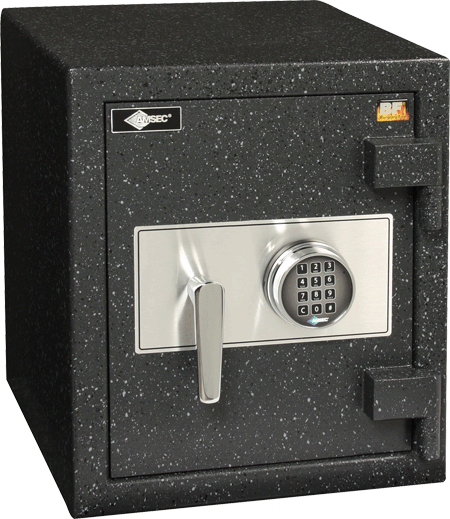
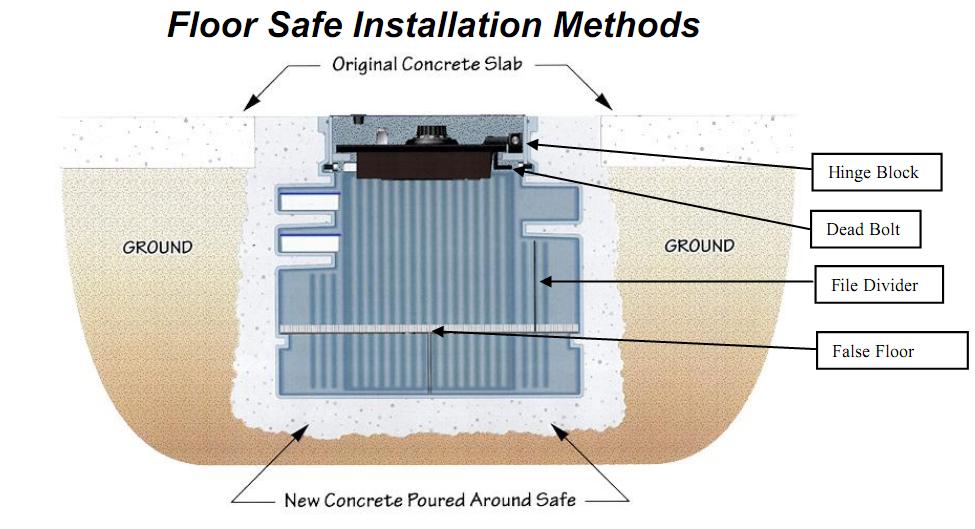
The SentrySafe SFW123DSB Combination Fire Safe with the Big Bolts Combination Lock is designed to protect documents, digital media and other valuables from fire, water and theft. 60% bigger bolts than traditioinal safes and a pry-resistant hinge bar provide additional security against unuthorized access.
Electronic locks are replacing a minimum of 50% of the traditional combination locks in commercial businesses
According to me a Perfect safe should have a greater fire resistance and should have a good quality of coating to protect it from thieves.